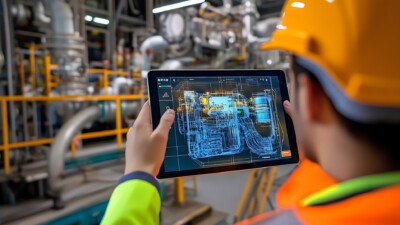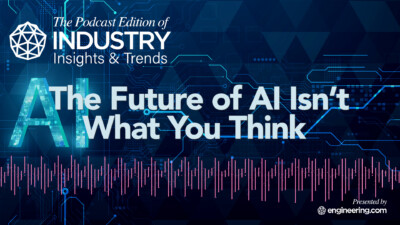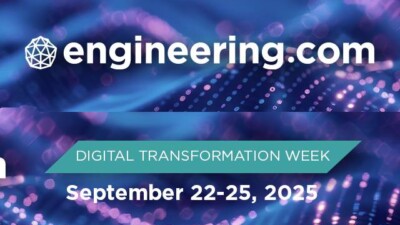AI that thinks versus AI that acts. Autonomously. Systemically. At scale.
We have learned to prompt AI. We have trained it to explain its reasoning. And we have begun to integrate it as a co-pilot or ‘co-assistant’ in science, product design, engineering, manufacturing and beyond—to facilitate enterprise-wide decision-making.
But even as chain-of-thought (CoT) prompting reshaped how we engage with machines, it also exposed a clear limitation: AI still waits for us to tell it what to do.
Often in engineering, the hardest part is not finding the right answer—it is knowing what the right question is in the first place. This highlights a critical truth: even advanced AI tools depend on human curiosity, perspective, and framing.
CoT helps bridge that gap, but it is still a people-centered evolution. As AI begins to reason more like humans, it raises a deeper question: Can it also begin to ask the right questions, not just answer them? Can the machine help engineers make product development or manufacturing decisions?
As complexity escalates and time-to-decision contracts, reactive monolithic enterprise systems alone will no longer suffice. We are entering a new era—where AI stops assisting and starts orchestrating.
Welcome to the age of agentic AI.
Chain-of-thought: transformational but not autonomous
CoT reasoning is a breakthrough in human-AI collaboration. By enabling AI to verbalize intermediate steps and reveal transparent reasoning, CoT has reshaped AI from an opaque black box into a more interpretable partner. This evolution has bolstered trust, enabling domain experts to validate AI outputs with greater confidence. Across sectors such as engineering, R&D, and supply chain management, CoT is accelerating adoption by enhancing human cognition.
Yet CoT remains fundamentally reactive. It requires human prompts and structured queries to function, lacking autonomy or initiative. In environments rife with complexity—thousands of interdependent variables influencing product development, manufacturing, and supply chains—waiting for human direction slows response and restricts scale.
Consider a product design review with multiple engineering teams navigating dynamic regulatory demands, supplier constraints, and shifting market trends. CoT can clarify reasoning or suggest alternatives, but it cannot autonomously prioritize design changes or coordinate cross-functional decisions in real time.
CoT is just the visible tip of the iceberg. While it connects to the underlying data plumbing, the real shift lies in how AI can interrogate these relationships meaningfully—and potentially uncover new ones. That is where things start to tip from reasoning to autonomy, and the door opens to agentic AI.
From logic to autonomous action
Agentic AI represents a fundamental leap from the prompt-response paradigm. These systems initiate, prioritize, and adapt. They fuse reasoning with goal-driven autonomy—capable of contextual assessment, navigating uncertainty, and taking independent action.
Self-directed, proactive, and context-aware, agentic AI embodies a new class of intelligent software—no longer answering queries alone but orchestrating workflows, resolving issues, and closing loops across complex value chains.
As Steven Bartlett noted in a recent DOAC podcast: “AI agents are the most disruptive technology of our lifetime.” They will not just change how we work—they will change what it means to work, reshaping roles, decisions, and entire industries in their wake.
The 2025 Trends in Artificial Intelligence report from Bond Capital highlights this transition, describing autonomous agents as evolving beyond manual interfaces into core enablers of digital workflows. The speed and scope of this transformation evoke the early days of the internet—only this time, the implications promise to be even more profound.
Redefining the digital thread
Agentic AI rewires the digital thread—from passive connectivity to proactive intelligence across the product lifecycle. No longer static, the thread becomes adaptive and autonomous. Industry applications are wide:
- In quality, AI monitors sensor streams, predicts anomalies, and triggers resolution—preventing defects before they occur.
- In configuration management, agents detect part-software-supplier conflicts and self-initiate change coordination.
- In supply chain orchestration, disruptions prompt real-time replanning, compliance updates, and automated documentation.
The result: reduced cycle times, faster iteration, and proactive risk mitigation. Can the digital thread become a thinking, dynamic learning, acting ecosystem—bridging data, context, and decisions?
Nevertheless, the transformation is not just technical:
- Trust and traceability: Autonomous decisions must be explainable, especially in regulated spaces.
- Data readiness: Structured, accessible data is the backbone of agentic performance.
- Integration: Agents must interface with PLM, ERP, digital twins, and legacy systems.
- Leadership and workforce evolution: Engineers become orchestrators and interpreters. Leaders must foster new models of human-AI engagement.
This shift is from thinking better to acting faster, smarter, and more autonomously. Agentic AI will redraw the boundaries between systems, workflows, and organizational silos.
For those ready to lead, this is not just automation, it is acceleration. If digital transformation was a journey, this is the moment the wheels leave the ground.
Building trustworthy autonomy
The road ahead is not about AI replacing humans—but about shaping new hybrid ecosystems where software agents and people collaborate in real time.
- We will see AI agents assigned persistent roles across product lifecycles—managing variants, orchestrating compliance, or continuously optimizing supply chains.
- These agents will not just “assist” engineers. They will augment system performance, suggesting better configurations, reducing rework, and flagging design risks before they materialize.
- Organizations will create AI observability frameworks—dashboards for tracking, auditing, and tuning the behavior of autonomous agents over time.
Going forward, we might not just review dashboards—we might be briefed by agents that curate insights, explain trade-offs, and propose resolutions. To succeed, the next wave of adoption will hinge on governance, skill development, and cultural readiness:
- Governance that sets transparent bounds for agent behavior, and continuous purposeful adjustments.
- Skills that blend domain expertise with human-AI fluency.
- Cultures that treat agents not as black boxes—but as emerging teammates or human extensions.
Crucially, managing AI hallucination—where systems generate plausible but inaccurate outputs—alongside the rising entropy of increasingly complex autonomous interactions, will be essential to maintain trust, ensure auditable reasoning, and prevent system drift or unintended behaviors.
Ultimately, the goal is not to lose control—but to gain new control levers. Agentic AI will demand a rethink not just of tools—but of who decides, how, and when. The future is not man versus machine. It should be machine-empowered humanity—faster, more adaptive, and infinitely more scalable.




